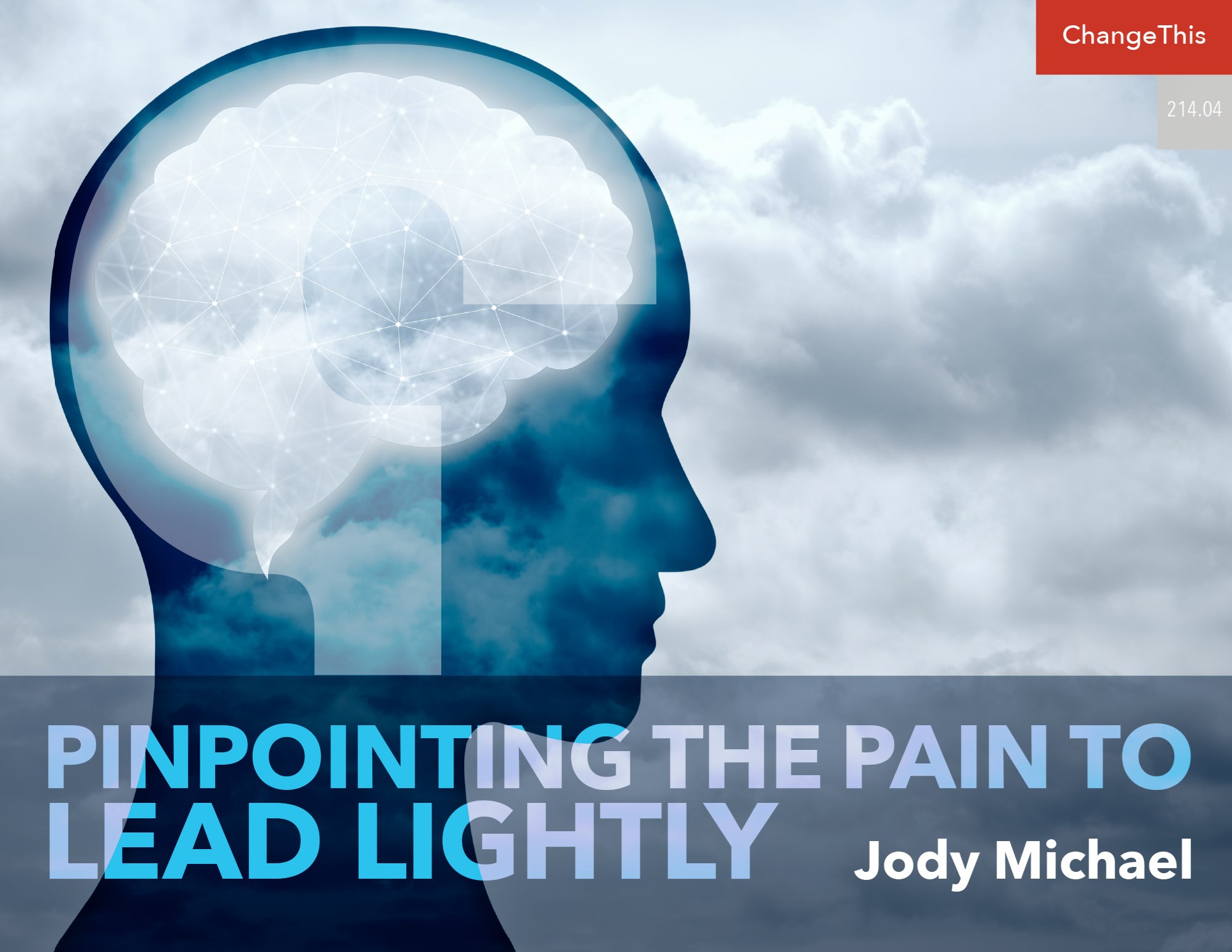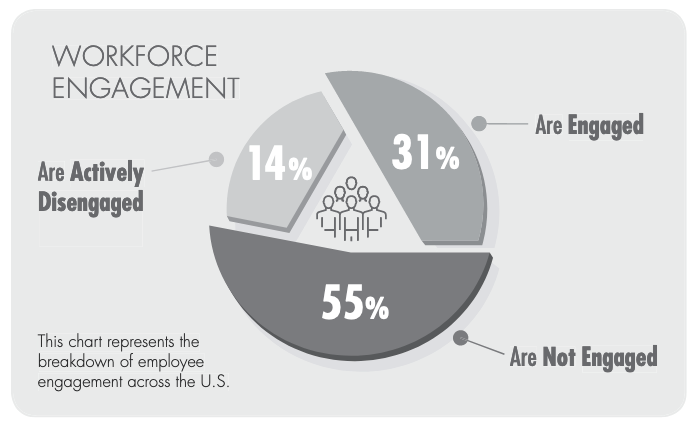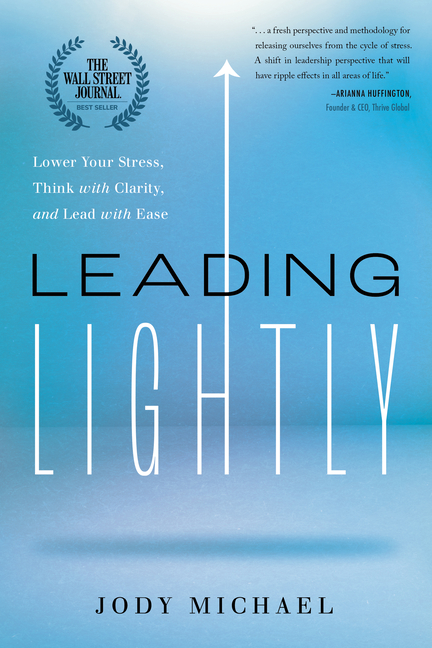Pinpointing the Pain to Lead Lightly
July 27, 2022
Pain hinders performance. So, if you want to play at the top of your game, if you want to be an outstanding leader, if you want to create even higher levels of success in your organization, then you have to do two things: One, stop the cycle of pain. Two, shift into a cycle of performance.
 Every difficult moment offers you a choice: pain or performance. Chances are, you’re choosing pain.
Every difficult moment offers you a choice: pain or performance. Chances are, you’re choosing pain.
You really can’t lead lightly if you are in pain.
However, pain is a fantastic catalyst because it is the spark that can get you to change. But you won’t change unless you acknowledge the pain in the moment. So, it turns out that pain is a great thing because it gives you the signal that it is time to practice going against your normal way of doing things, the way that is causing you problems. This is the moment where you have an opportunity to start to shape your brain to respond differently, to refocus your perceptual lenses to see differently.
Eliminating the pain will make it possible to lead lightly. Otherwise, you are living in a state of stress, being overwhelmed and frustrated.
Are you in pain?
I’m not talking about your aching muscles from yesterday’s CrossFit workout. I’m talking about you, your mental state. How are you, really? And while we’re at it, what about your direct reports and peers? Are they in pain? Is your organization in pain?
You’re not alone if you hate these questions. They’re uncomfortable to think about. We’ve all been taught that in the workplace, pain is taboo. I see that when I go into corporations and talk to executives about pain. At best, I will get a cautious acknowledgement of its existence, but if that happens—and again, it’s rare—it’s usually in a private “offline” conversation. Mostly I see (and face) intense resistance and a physiological response to the discussion. I can’t read their minds, but I can read their body language. They do not want to talk about it.
But here’s the thing: In all my years of executive coaching, I have yet to meet a person in corporate America today who does not have recurring complaints about something in their day-to-day work experience. Perhaps they have a difficult colleague. Or can’t get stakeholders on board. Their workload is unfair and no one recognizes their efforts. Their boss makes lousy decisions. On it goes. Oh, there is plenty to complain about.
Take a moment to realize that whenever you complain, that’s an example of pain. Maybe you don’t call it that. In the corporate setting, we have more acceptable words. We say it’s stress. Or irritation, frustration, worry.
How odd that executives easily talk about a business’s “pain points,” but as soon as I mention people being in pain, it’s like the hot potato no one wants to touch. To many, personal pain implies weakness.
If people are forced to confront personal pain in the organization—because of an employee “issue,” for example—they punt it as soon as possible to HR (who really don’t want it, either). In my many years of working with executives at all levels and across all industries I have found one thing to be consistently true: people are in a lot of pain.
Some know it but try to mask it. Many others don’t even know they are in pain—and will deny it when asked because it may not register. For people who keep themselves going all the time—Type As—it’s like pain is the water they are swimming in; they don’t recognize it for what it is because it’s the only way they have ever known.
Even worse, pain multiplies upon itself. People in pain unknowingly create additional pain for those around them, and for their organizations. Here’s a typical example. Usually, the person in pain is a driver. They’re constantly focused on doing (executing), on doing more, relentlessly without taking a breath—taxing their physiology limits and keeping their lens focused primarily on the tactical. All the while, they are missing the importance of reading the individual or the room, developing strategy, prioritizing, creating followership, or navigating with nuanced situational leadership.
That can cause three specific problems. The first is communication. Concerned that explaining things in detail will slow down getting the work done, they probably are not going to give adequate context for what they want done, which is frustrating for the people who work for them because there are going to be a lot of do-overs. These direct reports won’t always do the right thing, because they can’t discern what the right thing is.
Second, these drivers are going to err toward being directive rather than inspiring, because they’re focused solely on results. And finally, they are not going to be nurturing or empathetic, because they don’t feel there is any time for that either. As a result, the people working for them are not going to feel appreciated or heard, nor are they being set up for success.
As I’ve said, my firsthand experience with leaders teaches me that they are in a lot of pain, both recognized and unrecognized. Different kinds of pain, yes; but pain nonetheless. Think about it. How many people do you know—coworkers, friends, family, neighbors— who actually love their job? Who feel blessed to be doing what they do every day? The graphic here, from a survey done by Gallup, shows the number is remarkably small. Only 31 percent of employees are actively engaged.

Source: Jim Harter, “Historic Drop in Employee Engagement Follows Record Rise,” Gallup Workplace, July 2, 2020.
And while that 14 percent actively disengaged figure doesn’t look so bad, as Gallup was quick to point out, that means the remaining 55 percent are not engaged; they are psychologically unattached to their work and company. These employees put time, but not energy or passion, into their work.
Why am I pushing so hard on this point? Because I get hired to transform leaders and help them achieve dramatically higher levels of performance no matter how stressful or difficult their personal or professional circumstances. And what I know is that pain hinders performance. So, if you want to play at the top of your game, if you want to be an outstanding leader, if you want to create even higher levels of success in your organization, then you have to do two things: One, stop the cycle of pain. Two, shift into a cycle of performance.
NEEDED: A SYSTEMATIC APPROACH
In my work as an executive coach, I take a systemic perspective of both individuals and organizations. When companies approach me to work with their leadership, I seek to understand and address the organization’s systemic problems—the root causes—to create real and sustained change. That means dealing with the underlying and often unseen executive pain and transforming persistent negative energy that hurts the individual leader and the company.
But unfortunately, most companies typically want coaching that’s easy, fast, and painless for all involved. From my perspective, they are just check-ing the boxes. Find an executive coach! (Check.) Get that coach on board! (Check.) Executive gets coached! (Check.) Okay, coaching’s done! (Nope.) With some tactical coaching, the executive’s behavior might improve to a degree, but it most likely won’t be sustainable. If new challenges arise, or the current challenges intensify, those superficial improvements often do not hold. That’s why we need to take a systemic approach.
But frankly, this systemic lens can be a tough sell. Excavating and doing the deep work, while the return on investment might be great, just isn’t as sexy or expedient. Think about all the podcasts and blogs out there that promise a quick fix (with a minimal amount of effort) to change your life, leadership, productivity, etc. They abound.
But even though a superficial approach may be an easier pill to swallow, or bring apparent quick results, that does not make them an effective or sustainable solution. Superficial fixes are simply not my way or my organization’s way to transform leaders; they never have been. And in my opinion, they shouldn’t be your way! Not if you want to make truly profound change in your life, your work, or your organization.
PAINTING A MORE DETAILED PORTRAIT
When you are mentally fit, you are not ruminating or stewing. You are not stuck dwelling on what’s wrong or what could go wrong—thoughts that impede your performance. Instead, you’re resilient. You don’t take things personally. Whatever people may say to you slides right off of you.
On those rare occasions when you do find yourself triggered or threatened, it’s just momentary. You quickly regain your emotional equilibrium. In fact, when things do go wrong—the first place you look is you. Not to others! You’re not looking to blame. Instead, you’re looking to understand, to solve, to resolve.
When you’re mentally fit, you are not stuck. You move forward. You’re flexible. You listen, and you’re open to new ideas that aren’t your own. As a result, you and the stakeholders around you are more energized and engaged. Does all this sound too idyllic? Stop that thinking right now. There was a time in my life when I did not understand any of this either.
As a child, life was often hard and chaotic, and always unstable. Too frequently I knew poverty, even hunger, the brutality of repeated abuse, and the terrible heartache of watching my mother go in and out of institutions for years with intractable mental illness. I came out of all this as a young adult who was strong, ambitious, and visionary . . . but also emotionally reactive, quick to temper, and absolutely miserable inside. At the time, I managed my volatile moods by finding healthy emotional release—first as a competitive athlete in high school (basketball, volleyball, track, and tennis) and college (basketball, volleyball, softball), and then later as a trader on the floor of the Chicago Mercantile Exchange where aggressive behavior worked in my favor. Over time, I began to find professional success.
By all outward appearances, I had it all together. Inwardly, it was a different story. My emotional turmoil was intolerable. I had unhealthy levels of anxiety and dysfunctional relationships. Over and over, my behavior threatened to derail the hard-won success I was creating. Even though I was a natural leader, I was well on my way to becoming the type of negative leader that, years later, I would coach. Yes, I was that person.
However, I cared too much about my future to give up. I was driven by a growth mindset— the fundamental belief that I had the power and capability within me to change. I desperately wanted to be out of pain and to create a better life and a better me. So, I started to work on myself. Relentlessly. I found self-help books and workshops. Motivational speakers. Spiritual development groups. And I went through deep, intense psychoanalysis. I did all of this because I instinctively understood one fundamental thing about myself: my thoughts, moods, and behavior were driven by the deficits I had experienced in my childhood, but they had nothing to do with who I actually was. The core and essence of my being were none of these things.
I tell you all of this so that you understand when we talk about mental fitness, I am not teaching you a theory. I am coaching you to use what works in the real world, in your real environment, with whatever real background is part of your life to date. I know, intimately, what it’s like to be doing the best you can, while at the same time unwittingly sabotaging yourself. It is because I have lived this path that I can break the taboo about executive pain and speak about its dire costs. Most important, I can say with full confidence that extraordinary change is absolutely within your reach.
In every moment of every day, you have to decide whether you are going to create pain or create performance. In any given moment—consciously or not—you are always choosing to create one or the other: chronic stress, anxiety, and being overwhelmed, or resilience, engagement, and opportunity. In each moment, you have to make this choice again, and again, and again—until choosing performance over pain becomes so ingrained that it becomes automatic.
As a leader, this choice is crucially important, because the stakes are much larger than just you and your own world. Whatever you choose for yourself—for better or for worse—is what you will also spread to those who work for you, next to you, and above and below you. Whatever you choose for yourself is also your choice for your organization. The ripple effects are enormous.
IT’S UP TO YOU
What kind of person do you want to be? What kind of leader do you want to be?
I sincerely want for you to be mentally fit. I want you to choose vitality over depletion. To choose opportunity over obstacle. To choose performance over pain. I want you to be that leader whom everyone else wants to follow; the one who shows others through example that there is a different and better reality. My wish for you is to be in alignment with your best self, at work and at home.
Mental fitness is built on choice and skill. Skill can be developed through practice. Choice is just choice. You make the choice, or you don’t. If you don’t choose to create performance in one particular moment, it’s okay, it’s not forever. In the very next moment you get another opportunity to choose all over again. You exercise that muscle to choose.
But fundamentally, you have to believe that you do have a choice and that this choice is worth making.
Adapted from Leading Lightly.
Copyright © 2022 by Jody Michael.
All Rights Reserved.
ABOUT THE AUTHOR
Jody Michael is CEO of Jody Michael Associates. She is an internationally credentialed Master Certified Coach, Board Certified Coach, University of Chicago trained psychotherapist, and Licensed Clinical Social Worker. She’s built her expertise through 40,000+ hours of individual sessions across 25+ years of coaching; post-graduate education in human behavior, neuroscience, and psychology; and 15 years in corporate leadership. Jody has coached some of the nation’s top performing leaders and teams across diverse industries and organizations, from hypergrowth tech companies to global Fortune 100 organizations. Among her clients are more than 120 senior executives across 18 Fortune 100 companies. She’s a renowned keynote speaker, author, and thought leader who has been featured in the Wall Street Journal, New York Times, Forbes, Oprah Magazine, Huffington Post, Crain’s Chicago, and more. She has appeared as an expert on MSNBC, CNN, the TODAY Show, and NPR. Jody and her partner Kathy reside in Chicago, IL, and Palm Springs, CA.


